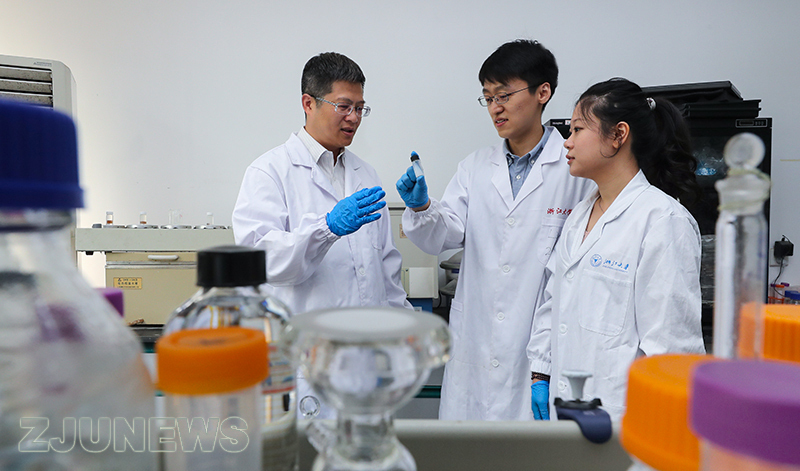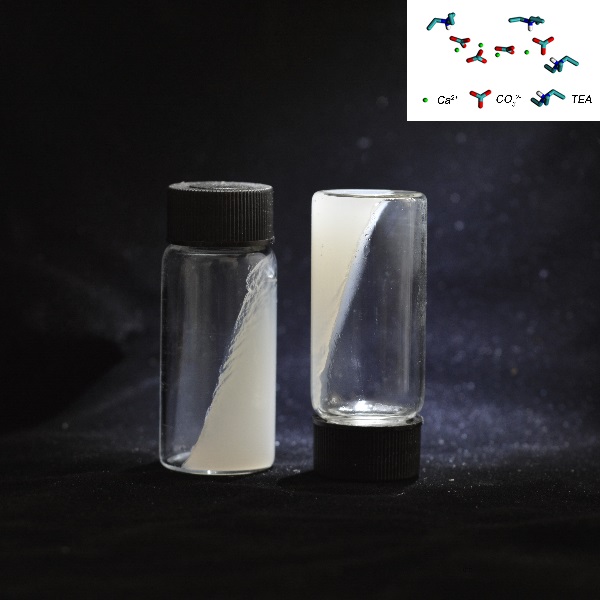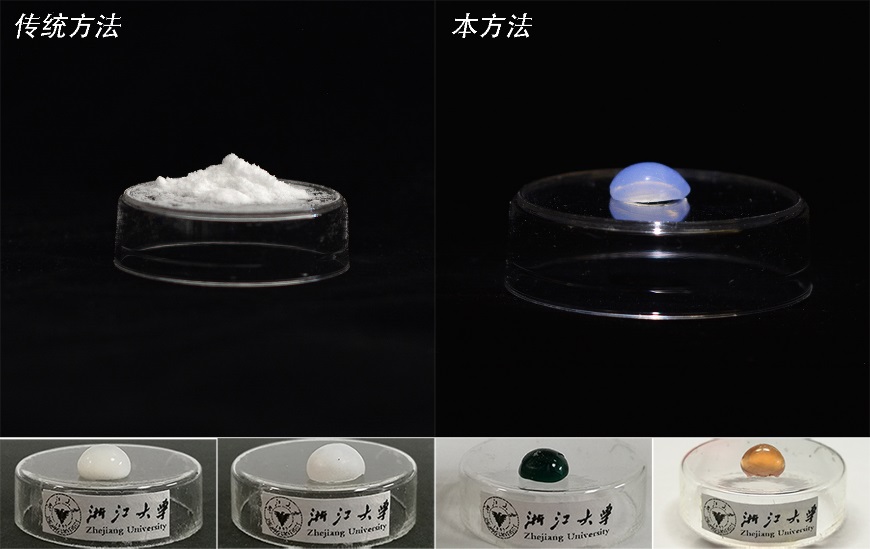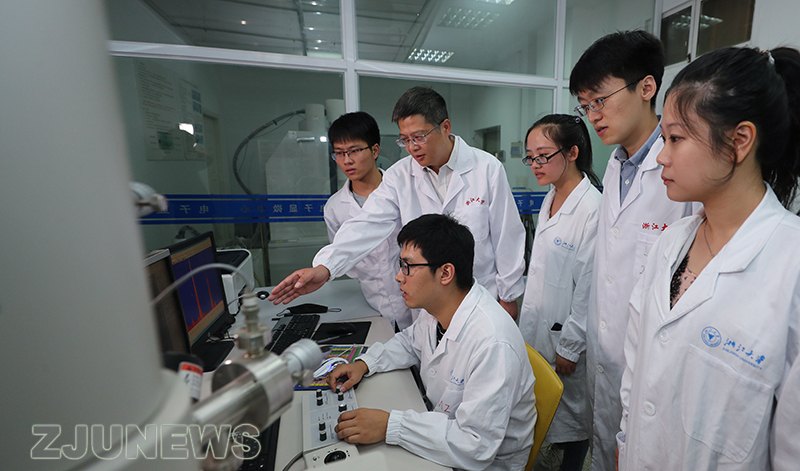When a cup of dense saltwater is continuously heated, there will appear small crystalized particles. The research team led by Prof. TANG Ruikang of the Zhejiang University Department of Chemistry "intercepted" a special precursor-ionic oligomers in their endeavor to "suspend" this crystallization process. Amazingly, oligomers can be cross-linked like polymer materials, thereby forming continuous and bulky inorganic materials. This means that inorganic materials are expected to be manufactured monolithically like plastic products, and that various complicated shapes can be produced.

The relevant finding is published in a research article titled "Crosslinking ionic oligomers as conformable precursors to calcium carbonate" in the October 17 issue of Nature. The lead author is Dr. LIU Zhaoming. The research team also tried to repair such inorganic materials as single crystal calcite, sea-urchin spines and teeth. This method is believed to create a novel reaction system, namely "inorganic ionic polymerization", which crosses the boundary between inorganic chemistry and polymer chemistry and presages that inorganic materials will enter human life with new structures and properties.
The "pause key" in the process of crystallization
Crystallization is ubiquitous, ranging from limestone caves to kidney stones. However, it remains enigmatic as regards the transition of a solution from the ionic state to the crystal state. Many scientists have put forward some hypotheses and theories about the intermediate state in the past few years, but no direct observational evidence has been obtained.
The research team discovered a "pause key"-a small molecule called triethylamine (TEA). It can act as a capping agent to stabilize oligomers by forming a hydrogen bond with a protonated carbonate through its tertiary amine group. More importantly, it can be easily removed.
The discovery of "inorganic ionic oligomers"
With the addition of TEA, the crystallization process has become a "race": carbonate ions in the solution can combine with both calcium and TEA. Which is faster? The moment carbonate ions form a "short chain" with calcium ions, TEA will come up to "seal" one end of the carbonate ion so that it can no longer react with the next calcium ion. As a result, the solution is teeming with "short chains" of calcium carbonate capped by TEA, which scientists call "oligomers".

Analysis using DAMMIF,a program that enables the shape of a substrate to be determined from SAXS data, shows that oligomers ((CaCO3)n, in which n represents the number of Ca2+:CO32− units) are rod-like with a length of 1.2 nm. It is the first time that inorganic ionic oligomers have been discovered.

Top left: CaCO3 made by traditional methods; Top right: (CaCO3)n oligomers made by current method;Bottom: Another four different kinds of inorganic materials made by the same approach.
What can these oligomers do? What novel properties do they have? In what way are they scientifically significant? These questions need to be explored.
The manufacturing of inorganic materials
Oligomers are low molecular weight polymers comprising a small number of repeat units whose physical properties are significantly dependent on the length of the chain. Oligomers are essentially intermediates of the polymerization reaction that find wide, direct applications in material science. Plastics and rubber are polymers cross-linked by monomers or oligomers. "They have a continuous structure. For example, a plastic basin can be perceived as a large molecule", says TANG Kuangrui. Plastics and rubber have played an essential role thanks to their exceptional properties.
However, the manufacturing of inorganic materials is circumscribed by classical crystallization, which often produces a colossal quantity of chaotic powders rather than monoliths with continuous structures.
The discovery of inorganic ionic oligomers betokens a hope of "transforming" inorganic materials. Once TEA is removed from a solution, the (CaCO3)n oligomers can be cross-linked into a continuous structure. The fluid-like behavior of the oligomer precursor enables it to be readily processed or molded into shapes, even for materials with structural complexity and variable morphologies. The material construction strategy that we introduce here arises from a fusion of classic inorganic and polymer chemistry, and uses the same cross-linking process for the manufacturing of the materials.
By using humidity- or water-induced crystallization under mild conditions, this method can be extended to the repair of biological hard tissues (biominerals) such as sea-urchin spines and teeth, demonstrating its potential in biological and biomedical applications. The capabilities and advantages of this method result from the properties of the oligomers and their crosslinking, and could enable the production of inorganic materials by a route analogous to that for organic polymers.

"We offer a novel method and see rays of hope," says TANG Kangrui.






